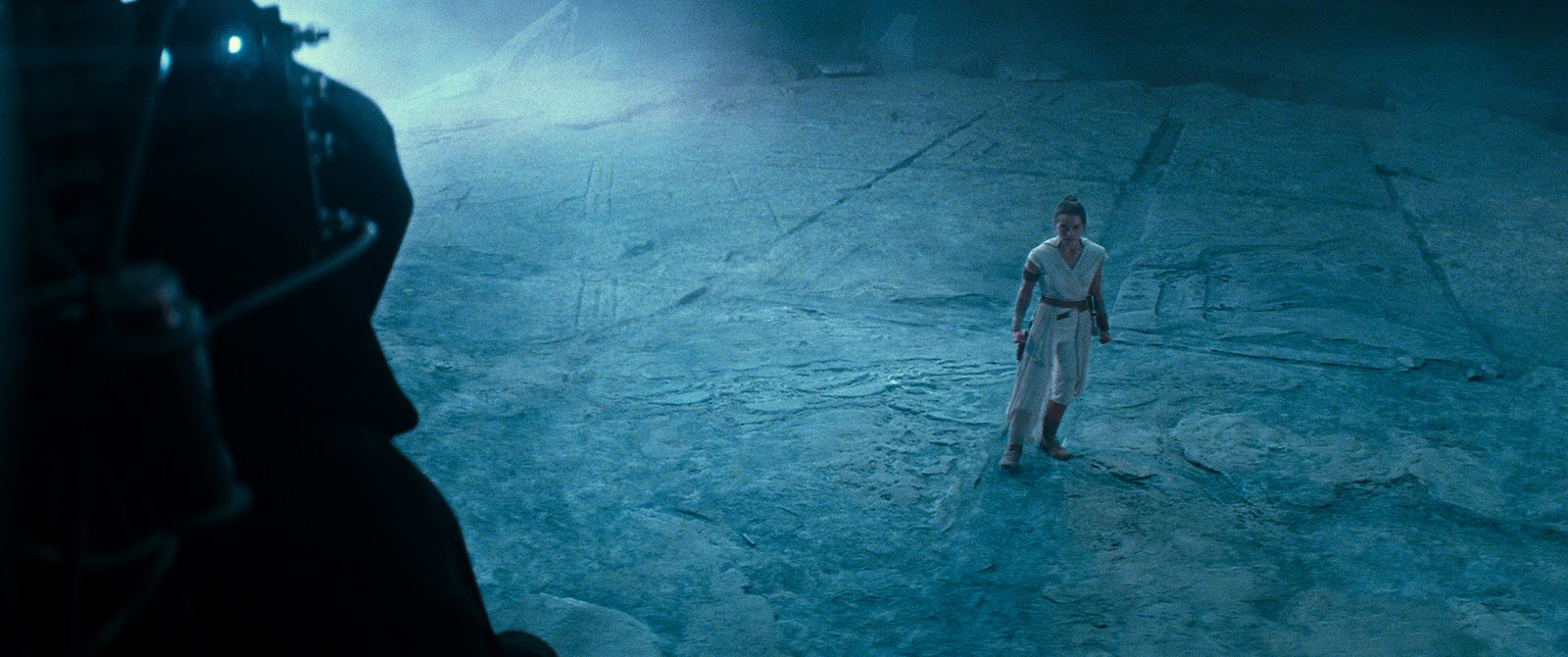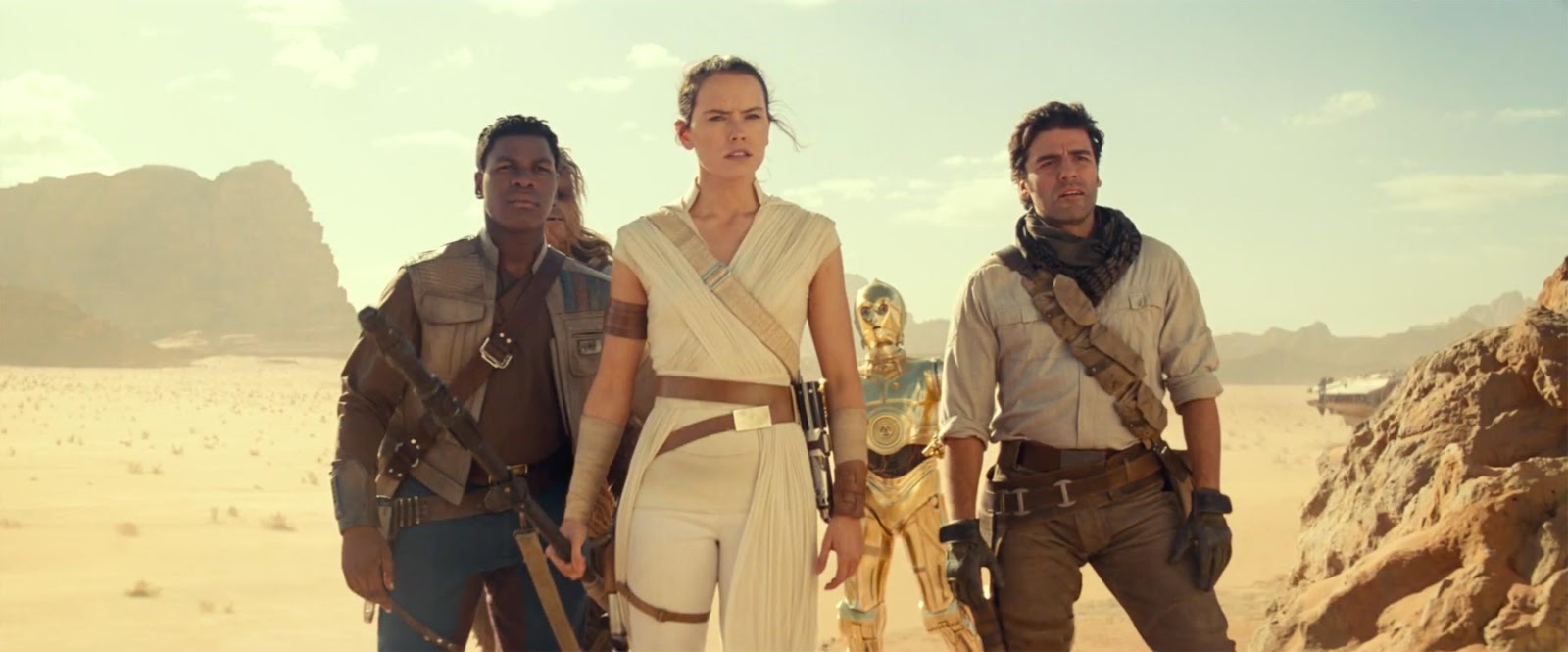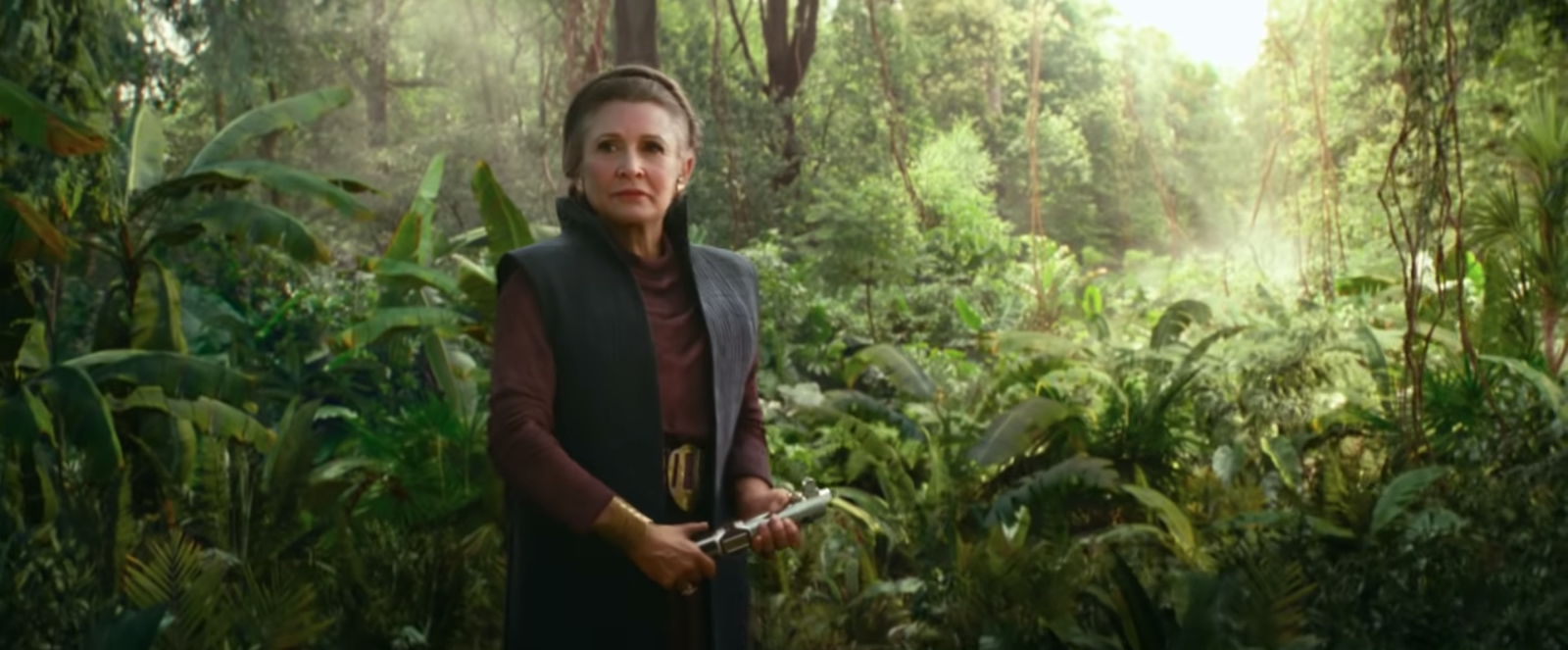Film Review – “Star Wars: The Rise of Skywalker”
There are no easy answers. That’s certainly true in life, but can it be true in Star Wars? Writer/director Rian Johnson seemed to think so in his sure-to-be-endlessly-debated 2017 installment Episode VIII - The Last Jedi. When the audience found out that Rey’s parents were “nobody” at the end of that film, it was-- to my mind at the time-- the only possible satisfying answer to that question, as it was the only one I hadn’t already seen predicted in a hundred places across the internet. It was also an interesting twist on an established Star Wars trope and a necessary reminder that though some families are indeed strong in the Force across generations, biological heritage isn’t the only source by which Jedi can come into existence.
I’m not going to spoil anything very specific in this review, but I will say that Kylo Ren’s imposing dark-side helmet getting hot-glued back together by a chimpanzee isn’t the only thing that J.J. Abrams doubles-back on in his follow-up to The Last Jedi, entitled Star Wars: Episode IX - The Rise of Skywalker, which arrives in theaters this weekend. Abrams returns to the franchise as director and co-writer after helming Episode VII - The Force Awakens four years ago, and his concluding chapter to this divisive sequel trilogy doesn’t quite go so far to pretend The Last Jedi never existed, but it does put in a lot of effort trying to course-correct the series toward a more traditionally operatic (and frankly, considerably less daring) outcome.
Structurally, Star Wars: The Rise of Skywalker is by and large the movie you’d expect it to be, given its creative sources. And depending on your faith in and appreciation for those sources, that can be considered a positive or a negative-- in my case the final product fell notably short of my already-middling expectations, though I was really, really wanted it would exceed them. Once I got past my disappointment at the above-implied backtracking, I tried my best to enjoy the movie for what it is: a fairly by-the-numbers if excessively busy finale whose surprises unfortunately aren’t terribly surprising. It’s got a big exhausting space battle at the end and an adequately epic planetside showdown among its Force-bearing characters to go along with it. It also has a decent amount of cool moments and a smattering of memorable production-design choices that had me muttering “Oh, that’s neat” to myself in the theater, but as an entry in the Star Wars saga it never strayed too far from where I expected it to go, story-wise.
It’s also bogged down by being overstuffed with fake-out deaths and almost-incomprehensible action sequences that barrel past at breakneck speed, not to mention a number of dangling character threads and intriguing setups that curiously never pay off. The sheer volume of content to absorb here is so overwhelming it may take several viewings to fully process it all (not that I recommend seeing it that many times). In fact, oftentimes there’s so much going on that it becomes difficult to connect with any of it. Ostensibly emotional scenes tend to feel oddly hollow and the plot is a perplexing mess until it eventually gets boiled down to its basics-- good vs. evil, which is the core of what Star Wars has been about for over four decades.
After a film in which the principle cast was scattered to the winds, off on their own individual adventures, The Rise of Skywalker makes an effort to keep the main characters together for its first half or so, and that rapid-fire second act of the movie begins feels hectically paced, probably as a direct result of that endeavor. With no side-mission to cut to, J.J. and his editors Maryann Brandon and Stefan Grube are forced to to keep things moving along at an overly breathless rate as the team of Rey (played once again by Daisy Ridley), Finn (John Boyega), and Poe Dameron (Oscar Isaac) find themselves planet-hopping as they attempt to track down a-- well, I won’t say what, but the journey does involve an abandoned ship, a mysterious ancient weapon, and for some reason a Star Wars version of Burning Man.
If you’ve been following the marketing for Episode IX at all, you know that our heroes meet some new friends along their path-- Zorii Bliss (Keri Russell) and Jannah (Naomi Ackie) among them, though we don’t really spend enough time with either of them to get attached in any meaningful way. We’re also reintroduced to old friends like Lando Calrissian (Billy Dee Williams, reprising his most famous role), but his part is little more than an extended cameo appearance spread out across a handful of scenes. I would love to have learned where Lando had been the whole time or for the movie to provide an excuse as to why he never showed up to help General Organa and the Resistance battle the First Order before this point, but explanations like that are swept under the rug Abrams-style, likely to be addressed later on down the road in the never-less-than-ample Star Wars ancillary materials.
The casting elephant in the room I haven’t addressed yet is the sure-to-be-controversial use of leftover footage of Carrie Fisher as Leia. It makes sense to want to give this legendary character a swan song, but the process by which the beloved performer was revitalized is barely effective. The scenes featuring the former princess of Alderaan are cringeworthy parades of awkwardly staged shots and bizarrely disjointed, non-sequitur lines that reminded me of when The Sopranos infamously bid farewell to Tony’s mother Livia after actress Nancy Marchand passed away. Thankfully, the presence of Leia in this movie also allows J.J. to answer a nagging question that has been plaguing fans-- myself included-- for years. That particular reveal (again, which I won’t spoil here) was immensely appreciated and made me wish the movie had delved further into exploring the lingering gaps and unaddressed mysteries of the Star Wars mythology, though I understand the risk of that turning the film into a feature-length Wookieepedia entry.
The best sections of The Rise of Skywalker involve another returning character, and I don’t hesitate to type his name here as he’s been featuring in so many of the trailers and TV spots: Sheev Palpatine (the always-entertaining Ian McDiarmid), former Emperor of the Galactic Empire who has returned to-- you guessed it-- take control of the galaxy once again. McDiarmid’s scenery-chewing performance is so delightful (and the design of Palpatine’s chamber, costumes, and props so mesmerizing) that I found myself yet again pining for a more compelling reason to bring him back. Longtime Star Wars aficionados have seen the Emperor resurrected before-- most notably in the early 90s Dark Horse comic book Star Wars: Dark Empire, now considered part of the alternate-timeline “Legends” canon-- and the narrative fallout here is essentially the same, with Rey and Kylo Ren (Adam Driver) transposed over the character of Luke.
As far as other positives go, Anthony Daniels (as series mainstay C-3PO) and Richard E. Grant (as newcomer Allegiant General Pryde) both consistently steal their respective scenes. And the resolution to the Rey / Kylo arc is a largely satisfying one, with Abrams and co-writer Chris Terrio borrowing (carrying over?) an innovative device established by Rian Johnson and following it through to its natural end. As it should be, the final interpersonal conflict of The Rise of Skywalker is its most gripping sequence, and there are a few moments scattered throughout that are sure to elicit hoots and hollers from certain sections of the larger Star Wars fanbase. This movie was created as a crowd-pleaser, after all, and like The Force Awakens before it, it feels pointedly aimed toward general audiences. It’s also, in my opinion, the most consistent in quality of these three films, though I don’t necessarily mean that as a compliment. Ultimately it’s missing many of the dizzying highs and eye-rolling lows of The Last Jedi, settling for something far more damning: a Star Wars that suffers from its own fatigue.
My grade: 2.5 out of 5 Babu Friks
Star Wars: The Rise of Skywalker hits theaters this Friday, December 20.







